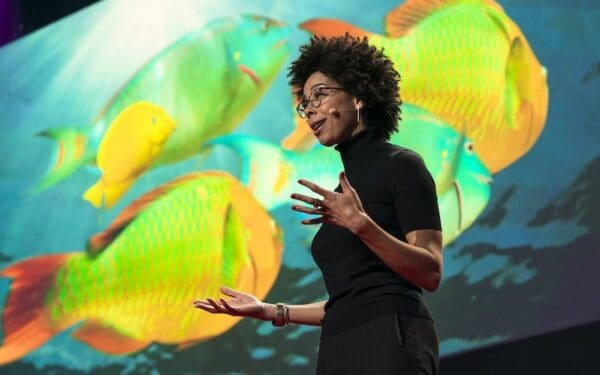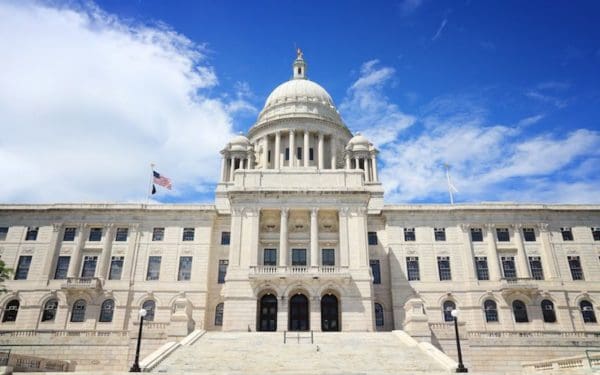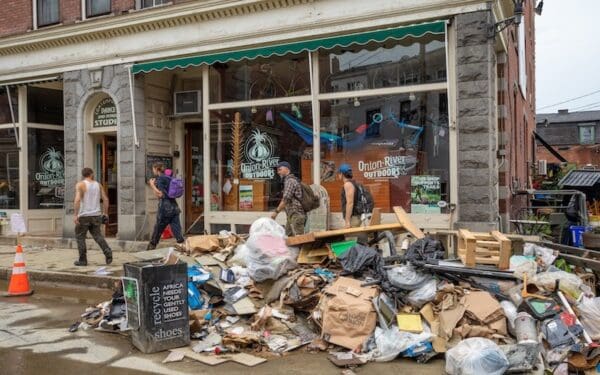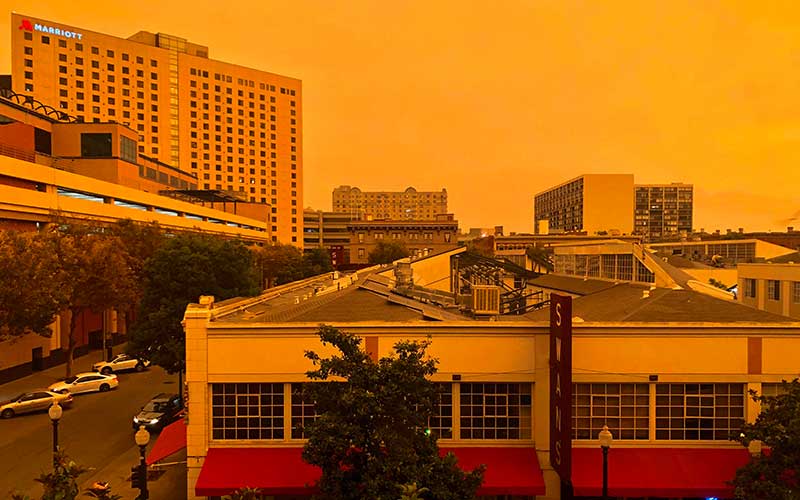
The view from my sister's apartment in Oakland, CA around midmorning on August 9, 2020. Photo Credit: Alanna Kwoka
Yesterday, my childhood home in Northern California looked like the setting for an apocalypse drama. The sky was an angry orange that darkened by the minute, ash hung heavy in the air, and the light inside my parents’ house was dim despite the afternoon sun. And my parents don’t even live near the worst of the wildfires raging across California and Oregon.
In the decade since I’ve moved away from California, I’ve watched the climate there go from a temperate paradise with the occasional fire to a place with scorching summers and yearly infernos. This is climate change, playing out right in front of us. It’s easy to see these and other disasters from afar and not call them climate catastrophes. But after seeing how much my home state has changed in just a few years, I can’t think of them as anything else.
But even as I feel angry about all of the time that has been wasted debating whether climate change is “real” or human-caused – and the deadly consequences of such politicking – I’m still determined to fight. Because we still have a chance, through local action, to push back against climate change and secure a better world.
The West Coast is Burning
If you haven’t seen the photos online, millions of acres are burning across the West Coast as I type this. Fire season is far from over, and already national forests have burned, cities have been evacuated, and people from Seattle to San Diego have had to swap their pandemic masks for wildfire ones. It’s straight out of a national disaster movie – yet national media coverage has been minimal, with little connection to climate change.
Thousands have lost their homes or are about to, and the hazards of evacuating at-risk areas are compounded by the dangers of a highly contagious pandemic where safety is gained by staying at home. Rural communities have been hit worst, as fires burn through their neighborhoods and block evacuation routes. And vulnerable people across the state are in danger, because along with wildfire threats, California’s largest utility has been ordering rolling blackouts to cut down on fire risk from falling electrical lines – despite unprecedented and record-breaking heat that has pushed local temperatures above 100 degrees.
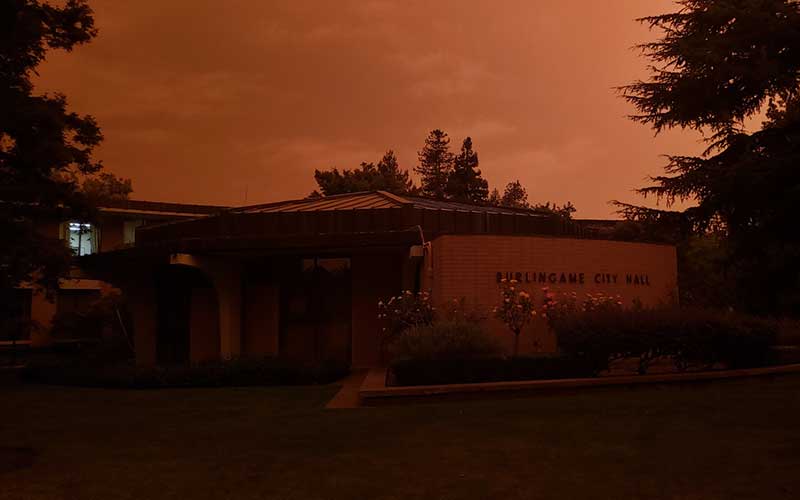
These Wildfires are Connected to Climate Change. Period.
Having a few wildfires every year is natural in California, Oregon, and Washington. However, our changing climate created years of drought, dry winters, and heat waves. This all comes on top of a colonialist policy that banned the controlled burning practices indigenous groups used for centuries to keep forests healthy and resilient.
It’s particularly bad this year, after extreme weather in August caused thousands of lightning strikes, which sparked simultaneous fires. Climate change has increased the number of high-risk fire days as well as the size of dry areas likely to burn. And insect outbreaks have caused mass tree deaths, adding more dry fuel to the fire.
Together, this has turned California into a tinderbox.
In the 10 Years Since I Left, the Bay Area Climate Has Changed
I grew up outside of San Francisco and lived in the Bay Area until leaving for college on the East Coast. I’ve now spent more than a decade living in New England, watching California’s climate change from afar. And change it has.
The Bay Area of my childhood only had a few really hot days every year, and I can’t recall a time it soared over 100 degrees in my neighborhood. (We were privileged to live in an area full of trees, in a microclimate that was always cooler than even an hour south.) But now, my brother has had to install an air conditioner in his room because it’s too hot to sleep at night. My parents have opened their home to friends who’ve been evacuated from fire danger zones or lost power due to rolling blackouts – complicated this year by COVID-19. And we watch together over text as places we used to visit are scorched by fire.
I feel incredibly fortunate that few of my family and friends across the state have had to evacuate, and so far none have lost their homes. But with global emissions still rising and a dearth of strong climate policies to force action, it feels like only a matter of time.
The Bad News is Bad. But There’s Still Time to Build a Safer World.
It feels almost futile to call for climate policy while your high school hangouts are burning. But only a combination of strong policy and local action can save us. This year alone we’ve seen wildfires on the West Coast, flooding in the Midwest, and hurricanes in the South. Not to mention a global pandemic and further devastating climate impacts across the world. Communities across the U.S. and around the world are feeling climate change’s impacts right now, and our governments need to step up.
The U.S. has a responsibility to lower its climate-damaging emissions – now. But our federal government refuses to act. That means each and every state in the U.S. needs to pass strong local climate policy, coupled with community resilience measures and protections for our most vulnerable neighbors. Some states in New England have taken these steps – the Vermont legislature just put a critical climate bill on the governor’s desk – while others still lag behind.
It may be lovely in Vermont today, from where I’m writing this. And the sky outside my sister’s Oakland apartment may have shifted from eerie orange to ash gray. But I’ve had to stop watching the video footage of families fleeing the fires in Oregon – taken on shaky phone cameras from passenger-side windows as drivers try to find routes out of the infernos – because I can’t stop imagining that as my own family, or me with my future children.
It’s a reminder that we’re all connected in this fight against climate change. Our emissions in New England matter – the more we pollute here, the worse it will be not only for us, but around the world.

